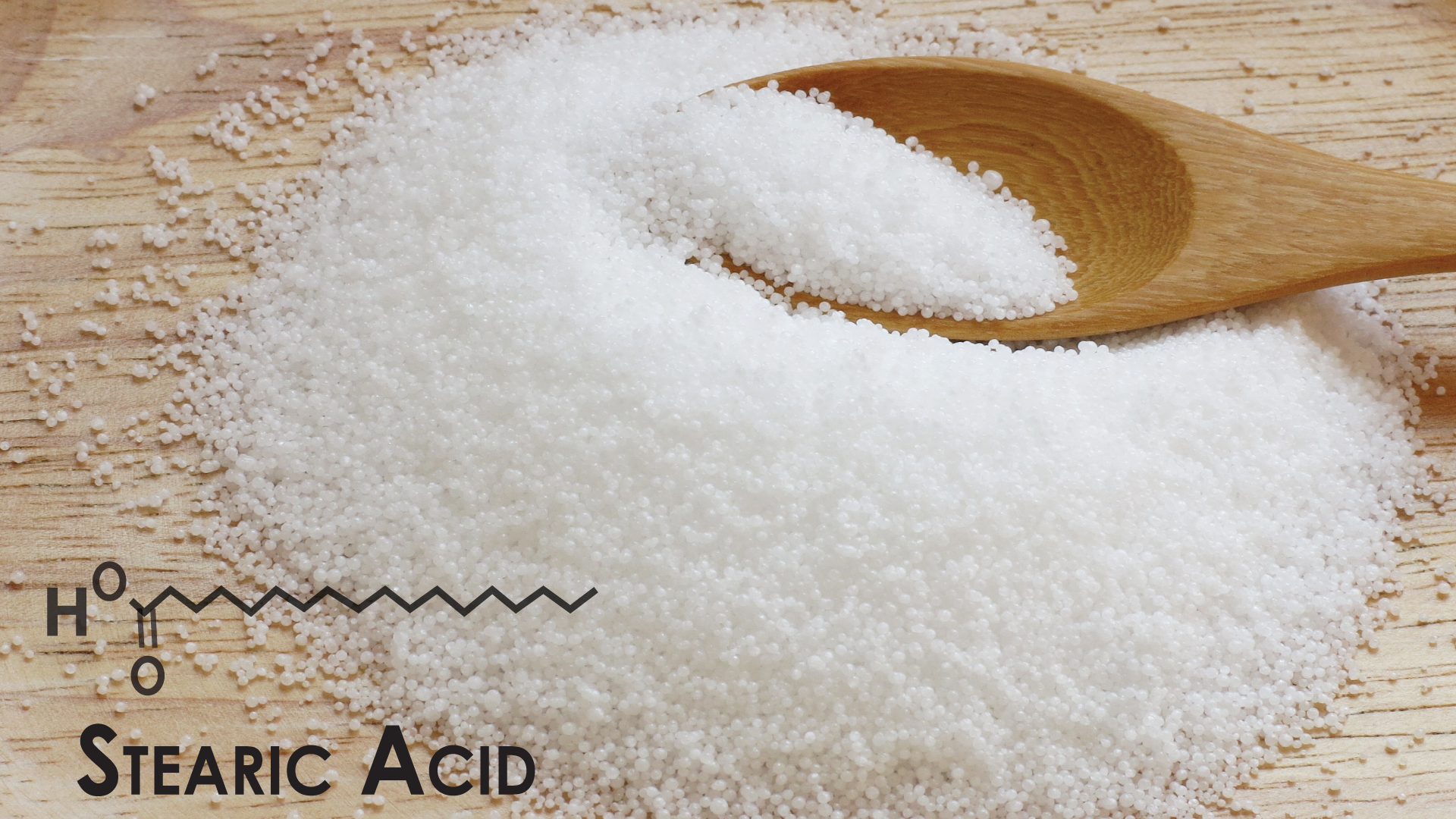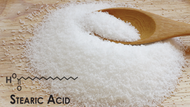What is Stearic Acid?
By on Jan 19th 2021

Stearic acid is a common saturated fatty acid. Saturated means, when it comes to the structure of the carbon chain there is not a lot of double bonds, hence the carbon is saturated and has more room for hydrogen. Being saturated also means that it is solid at room temperature.
This is the reason that butter (high in saturated fats) is solid at room temperature and cooking oil (normally unsaturated fatty acids) is liquid. Stearic and palmitic acids are the most consumed fatty acids in Western diets.
Where Does Stearic Acid Come From, and Is It Vegan?

Well in general it really depends. First, we need to determine where stearic acid comes from. It is created from fats and oils by a process called hydrogeneration.
Hydrogeneration is when Hydrogen gas is used to change the chemical structure. Alright, now that we have a rough idea of how it is made what kind of oils are used?
Ultimately it depends on the manufacturer. Stearic acid is generally made more abundantly from animals’ fat than it is from vegetable fat/oils, apart from cocoa butter. If you are looking to determine if it is vegan or not looked to see how it is derived, if it is tallow derived that means it most likely comes from beef and mutton fat.
Stearic Acid in Cosmetics
Why are we putting acid on our faces? Well as it turns out, stearic acid has a pH of around 6, while water has a pH of 7. This means that it is only slightly more acidic than water.
The skin is believed to have a pH value of less than 5, although this depends on where you are located due to natural tap water playing a role. In general, it is better to have slightly acidic products than a slightly basic product. This is where stearic acid comes into play.
Stearic acid is commonly found in all kinds of different cosmetic applications with some being deodorant, soaps, shampoos. You name it, it is probably there.
So why is it so common in cosmetics? Stearic acid is used in cosmetics for its ability to stabilize, thicken and even soften the product as well as cleanse and moisturize the skin. It is a key ingredient that holds everything together.
Stearic Acid in Your Food and Other Uses
Stearic acid is not usually directly used as an ingredient in your food rather it is used indirectly for its lubricity, emulsification, and soft properties. It is used for these qualities in gum and candy. It can also be used as a coating agent on chocolate products to give them the distinct glow and prevents them from sticking together.
As stearic acid is easy to produce and relatively cheap it has found uses in a variety of other interesting products. Sometimes it is found in lead-acid batteries to reduce oxidation, candles for structure, grease, pharmaceuticals, and even fireworks.
Is It Safe?

Safety is important and stearic acid is safe. There even appear to be some health benefits of it, as studies have shown that it may be helpful in treating and preventing breast cancer and other types of cancer. It has also been shown to decrease cardiovascular risks.
Stearic acid is generally recognized as safe by the FDA and is not really limited in the amount that can be used. The same is true with the European Food Safety Authority, and they have concluded that there is no safety concern with the use of stearic acid or other fatty acids in food.
Need Stearic Acid in bulk for your business? Ingredi.com has what you need!
Stearic Acid, Vstearin SA 11 | 50 lbs Bag
Don't forget to take advantage of bulk pricing option to save even more on every order!
Sources:
https://rawchemistry.com/blogs/news/what-are-the-benefits-of-stearic-acid#:~:text=The%20Cosmestics%20Database%20describes%20stearic,increases%20the%20risk%20of%20cancer
https://cosmeticsinfo.org/ingredient/stearic-acid
https://pubmed.ncbi.nlm.nih.gov/18489300/
https://crueltyfreereviews.com/is-stearic-acid-vegan/
https://apps.who.int/food-additives-contaminants-jecfa-database/chemical.aspx?chemID=690
https://foodadditives.net/fatty-acids/stearic-acid/
https://pubchem.ncbi.nlm.nih.gov/compound/528
https://www.ncbi.nlm.nih.gov/pmc/articles/PMC4171909/
https://www.ncbi.nlm.nih.gov/pmc/articles/PMC2946230/
https://www.nature.com/articles/s41467-018-05614-6
https://www.accessdata.fda.gov/scripts/cdrh/cfdocs/cfcfr/CFRSearch.cfm?fr=184.1090
https://efsa.onlinelibrary.wiley.com/doi/epdf/10.2903/j.efsa.2017.4785
https://www.mdedge.com/dermatology/article/78248/aesthetic-dermatology/stearic-acid?sso=true
https://oceanicaskin.care/blogs/news/what-is-stearic-acid-for






